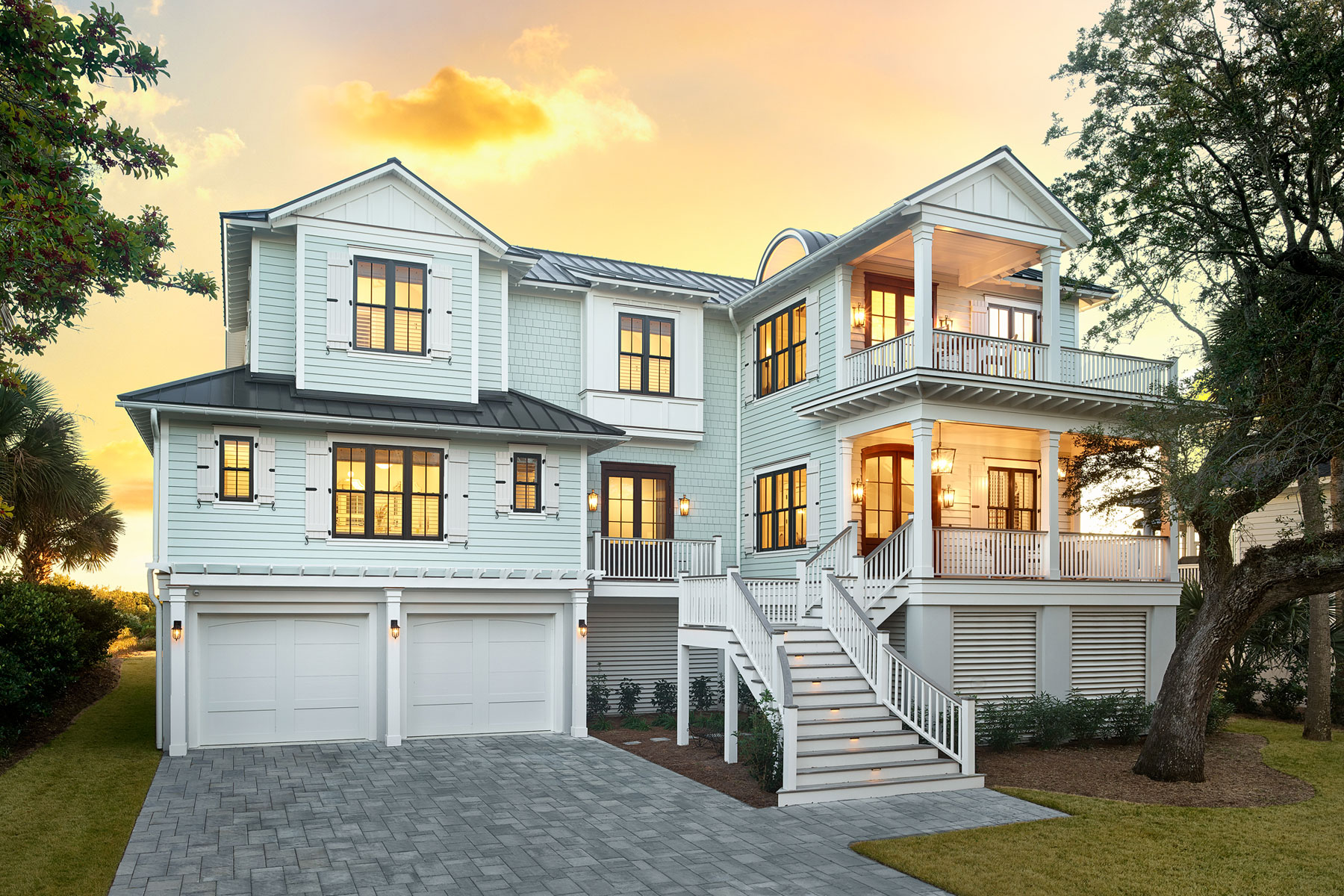Unlocking the Secrets of Authentic Coastal Design: From Floor Plans to Finishing Touches
Finding the Perfect Blueprint for Your Coastal Oasis
Dreaming of oceanfront tranquility and the relaxed elegance of coastal living? Designing your dream coastal home is the first step towards making that a reality. With a wealth of resources available, finding the perfect coastal house plan is easier than you might think.
Websites like CoastalHomePlans.com, SouthernLiving.com, HousePlans.net, and ArchitecturalDesigns.com offer a diverse range of options, from cozy cottages to sprawling seaside villas. Before you get swept away by the beauty of it all, consider these key factors:
- Functionality: How will your family use the space? Do you entertain frequently?
- Lot Size and Location: Are you looking for a narrow lot design or a spacious waterfront property?
- Budget: Pre-designed plans offer affordability, while custom options allow for greater personalization.
Exploring Architectural Styles: Beyond the Beach House
Coastal homes encompass a variety of architectural styles, each with its own unique charm:
- Traditional Coastal: This classic approach embraces a timeless aesthetic, often featuring inviting front porches, large windows maximizing ocean views, and a seamless connection to the outdoors.
- Coastal Plantation: Blending traditional coastal elements with Southern elegance, these homes typically showcase grand columns, spacious verandas, and a graceful symmetry that exudes hospitality.
- Modern Coastal: Characterized by clean lines, minimalist design, and a focus on natural light, this style incorporates sustainable materials and energy-efficient features for a contemporary take on coastal living.
Ultimately, the architectural style you choose should complement the surrounding landscape and reflect your personal preferences.
Defining Your Coastal Design Aesthetic: Capturing the Essence of the Coast
Coastal design goes beyond location—it’s about capturing the feeling of being by the sea and translating that into your home’s atmosphere. Here’s how to create a serene and inviting space that embodies coastal living:
- Color Palettes: Imagine the soft blues of the sky meeting the refreshing greens of the ocean, all enveloped in the warm, sandy hues of the shoreline. These colors, along with crisp whites and pops of coral or turquoise, form the foundation of a coastal color scheme.
- Natural Materials: Incorporate the textures of nature with wood flooring, exposed beams, and comfortable wicker furniture. Linen upholstery, cotton throws, and flowy curtains add a touch of laid-back luxury.
- Decor: Subtle nautical elements—think rope accents, seashells, driftwood, or a vintage ship’s wheel—can enhance the coastal vibe. Seascapes, botanical prints, and ocean-inspired artwork personalize the space and reinforce the connection to the sea.
Building and Buying a Coastal Home: Navigating the Process
Once you’ve settled on a plan and design aesthetic, it’s time to decide whether to build or buy your coastal haven.
Building Your Coastal Escape:
- Elevated Foundations: Coastal regions often require elevated, piling, or stilt foundations to protect against flooding and maximize ocean views.
- Permits and Regulations: Familiarize yourself with local building codes and zoning regulations, which can be stricter in coastal areas to protect sensitive ecosystems.
- Expert Collaboration: Enlist experienced architects, contractors, and designers specializing in coastal construction to navigate the unique challenges of building near the shoreline.
Buying Your Coastal Retreat:
- Online Resources: Websites like Zillow.com are valuable tools for browsing available coastal properties, viewing photos, and even scheduling tours.
- Location, Location, Location: Consider proximity to the beach, local amenities, the neighborhood’s overall feel, and potential risks related to climate change.
- Professional Inspection: Always have a qualified professional thoroughly inspect the property before making an offer to identify any potential issues.
The Future of Coastal Living: Embracing Sustainability
Designing and building a coastal home comes with a responsibility to protect the environment that makes these locations so desirable.
- Sustainable Materials: Opt for eco-friendly options like bamboo, reclaimed wood, or recycled materials whenever possible.
- Energy Efficiency: Incorporate energy-efficient windows, appliances, and insulation to reduce your carbon footprint and lower energy costs.
- Water Conservation: Install low-flow fixtures, consider a rainwater harvesting system for irrigation, and choose drought-tolerant landscaping to conserve this precious resource.
What is a Coastal Style House?
Coastal style is more than just a geographical location—it’s a feeling, a mood. It’s about capturing the essence of the coast and translating it into a space that feels relaxed, inviting, and uniquely you.
Imagine the colors of a seaside landscape: the crisp white of the clouds, the gentle beige of the sand, and the refreshing blues and greens of the water. These colors, often accented with pops of coral or sunny yellow, form the foundation of a coastal color palette, creating a sense of airiness and tranquility.
The textures of a coastal home are just as important as the colors. Think flowy linen curtains, plush cotton sofas, and woven jute rugs underfoot. Natural materials like wicker, rattan, and light woods add visual interest and create that relaxed, lived-in feel.
Furniture in a coastal style home tends towards the comfortable and casual. Imagine sinking into a plush armchair draped with a cozy throw, or gathering around a weathered dining table with loved ones. The key is to create a space that feels welcoming and inviting, a place where you can relax and unwind.
While you don’t want to go overboard with nautical themes, incorporating subtle nods to the sea can enhance the coastal vibe. This could be anything from classic navy blue and white stripes to the occasional anchor or sailboat motif. But remember, coastal style isn’t just about nautical elements. Bringing in natural elements like seashells, driftwood, coral, or botanical prints can be just as effective in evoking a sense of the coast.
Here are some different approaches to Coastal Style:
| Coastal Style Type | Description |
|---|---|
| Traditional/Classic Nautical | Embraces classic nautical themes like navy and white stripes, model ships, and brass accents. It’s a more literal interpretation of the coastal aesthetic. |
| Coastal Cottage | Exudes a relaxed and comfortable feel, often incorporating vintage or whimsical touches. Think whitewashed furniture, floral patterns, and distressed wood. |
| Modern Coastal | Streamlines the coastal look with clean lines and a minimalist approach. It still embraces the characteristic color palettes and natural materials but in a more contemporary way. |
What is the Meaning of Coastal Houses?
More than just structures by the sea, coastal houses represent a way of life. They embody a connection to nature, a sense of peace and tranquility, and a celebration of the beauty of the coast.
Architectural elements often include large windows to maximize natural light and breathtaking views, while natural materials like wood, linen, and stone connect the indoors with the surrounding environment. The color palettes draw inspiration from the natural hues of the coast, creating a serene and inviting atmosphere.
Coastal homes embrace a variety of architectural styles, from traditional designs with classic nautical elements to more modern interpretations with clean lines and minimalist aesthetics. This diversity reflects the multifaceted nature of coastal living itself.
Why are Coastal Houses So Expensive?
The allure of coastal living comes with a hefty price tag. Several factors contribute to the high cost of coastal homes:
- Limited Supply and High Demand: The desirability of coastal living creates high demand, but the amount of land available along the coast is finite, driving up prices.
- Economic Factors: Coastal areas often boast thriving economies, fueled by tourism, recreation, and water-related industries. This economic prosperity attracts higher-income earners, further increasing housing demand and pushing prices upward.
- Construction and Maintenance Costs: Building near the coast requires specialized materials and techniques to withstand harsh conditions such as salty air, strong winds, and erosion. This specialized expertise, along with the ongoing maintenance required, adds to the overall expense.
- Climate Change and Future Risks: Rising sea levels and the increasing frequency of extreme weather events pose a significant risk to coastal properties. Homeowners often invest in costly protective measures—like elevating homes or building seawalls—which contribute to the overall cost.
While the cost of coastal living can be high, the unique lifestyle, stunning views, and access to recreational activities continue to make coastal homes a coveted dream for many.
Deliverables: I need a “collection of titles” from your competitors to generate relevant article titles. Please provide them so I can complete this task.
- Best Color Backsplash For White Cabinets: Ideas Youll Love - November 27, 2025
- White On White Backsplash: A Timeless Kitchen Design Choice - November 26, 2025
- Tile Backsplash With White Cabinets: A Kitchen Design Guide - November 25, 2025










